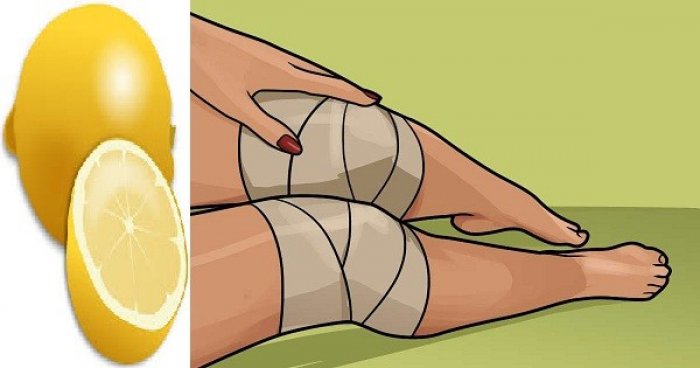Knee pain is a common problem and can affect people of all ages. It can be caused by a sudden injury, an overuse injury, or by an underlying condition, such as arthritis. Treatment will vary depending on the cause.
Sudden pain in one of the knees is usually the result of overusing the knee or injuring it. In many cases, you don’t need to see your GP.
HERE’S HOW TO USE LEMON TO GET RID OF KNEE PAIN AT HOME
Ingredients:
- 1-2 lemons
- sesame oil
Directions:
- Cut the lemons into small pieces.
- Tie the pieces in a cotton cloth and dip it in warm sesame oil.
- Place the cloth on the affected knee for 5 to 10 minutes.
- Do this twice daily until the pain is gone completely.
Note: Drinking the juice of one lemon diluted in a glass of warm water early in the morning on an empty stomach is also beneficial.
Lemons are rich sources of vitamins and minerals such as Vitamin C, A, B1, B6, magnesium, bioflavonoids, pectin, folic acid, phosphorous, calcium, and potassium.
The high amount of calcium and vitamin C help in maintaining and improving the health of bones and prevents bone related diseases likes osteoporosis, rheumatoid arthritis and inflammatory polyarthritis.
Fragrant essential oils in lemon help relax blood vessels and produce an anti-inflammatory effect, making them useful for joint and nerve pain.
Sesame oil has been used as a healing oil for thousands of years. It is a natural anti-inflammatory agent.
Sesame seed oil absorbs quickly and penetrates through the tissues to the very marrow of the bone. It enters into the blood stream through the capillaries and circulates. The liver does not sweep sesame seed oil molecules from the blood, accepting those molecules as friendly. It helps joints keep their flexibility.
When to see your doctor?
NHS Choices recommends you to see your GP if:
- you cannot put weight on your knee at all
- you have severe pain even when you’re not putting weight on it, such as at night
- your knee locks or painfully clicks
- you’re unable to fully bend or straighten your knee
- your knee looks deformed
- you have fever, redness or heat around the knee
- the pain doesn’t start to improve within a few weeks or you have pain that’s still severe
- after a few days of caring for your knee at home.
